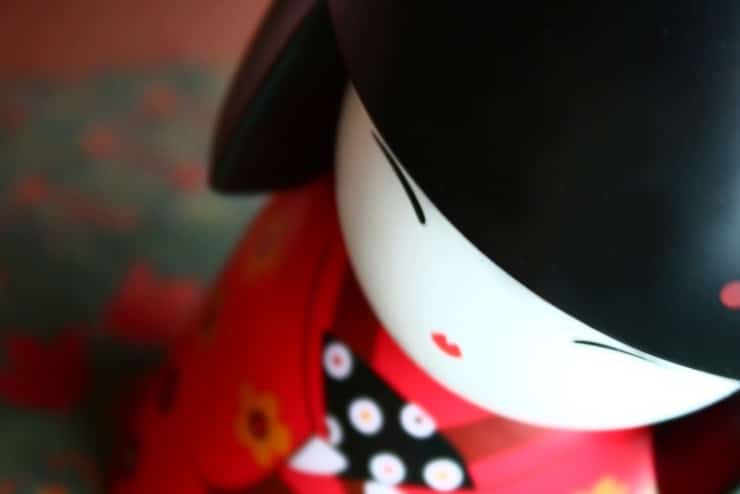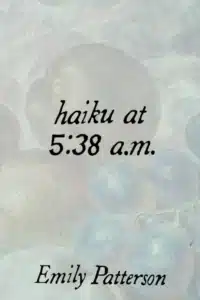
The simplest form of poetry, and, indeed, one of the simplest forms of all written communication, is the haiku. Derived from the Japanese hokku, it became a serious art form in the hands of the Japanese poet Bashō (1644-1694). The traditional form of a haiku is three lines of 5-7-5 syllables. Originally, it was confined to observations of nature, and while that’s still a common use today, we use the form to describe all kinds of themes and subjects.
Like to describe each hour of the day. That’s how poet and writer Emily Patterson uses the haiku in Haiku at 5:38 a.m. In her collection of 24 poems, she has one haiku for each hour of the day.
It’s an imaginative approach to describing one’s day, from the moment of awakening to the return to sleep at night. What using the form does is distill the detailed and often complex into the simple, or at least the simply stated. It’s the magic of the haiku form — a surface simplicity that can pack considerable complexity and detail into its 17 (but not always) syllables.
Had Patterson arranged the poems chronologically, you might think this is a secular version of the Benedictine canonical hours. That’s what I first thought, until I looked at the order. But she jumbles the times, reflecting the usual chaos of a day for a young mother. This is a collection about the daily life of a young woman, and the 24 poems tell a familiar yet individual story.
Here are two of the poems, the title poem (which is placed first) and one about the evening hours.

Eyes tight, skin feathered,
voice a thousand doves uncaged.
You emerge.
haiku at 6:49 p.m.
Small legs framed in mine,
we bathe in warm water.
Separate now — yet bound.
The first describes awakening from sleep. She uses an image from nature — a bird — to describe what is happening. The “thousand doves uncaged” to describe the wakening voice is apt in all kinds of ways (although, as you age, it’s more like a thousand crows uncaged). The second describes bathing a child and understanding both the connectedness and the individuality. It’s an arresting poem visually; you can picture the child splashing and playing at bathtime, and you can hear what the mother is thinking.

Emily Patterson
Patterson has published two previous collections, So Much Tending Remains (2022) and To Bend and to Braid (2023). Her work has been published by numerous literary journals and magazines, including Rust & Moth, Whale Road Review, North American Review, CALYX, and many others. She received a B.A. in English from Ohio Wesleyan University and an M.A. in Education from Ohio State University. She lives in Columbus, Ohio.
Haiku at 5:38 a.m. accomplishes what the haiku form is all about: simple poems, packed with meaning, taking you to thoughts, experiences, and memories. It’s downright amazing what three lines can do.
Photo by Jane Garratt, Creative Commons, via Flickr. Post by Glynn Young.
How to Read a Poem uses images like the mouse, the hive, the switch (from the Billy Collins poem)—to guide readers into new ways of understanding poems. Anthology included.
“I require all our incoming poetry students—in the MFA I direct—to buy and read this book.”
—Jeanetta Calhoun Mish
- Poet Sidney Lanier and the Lost Cause - October 2, 2025
- Poets and Poems: A.J. Thibault and “We Lack a Word” - September 30, 2025
- Poets and Poems: Catherine Strisik and “Goat, Goddess, Moon” - September 25, 2025

Leave a Reply